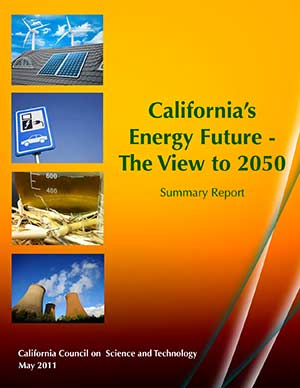The Legacy of Project California: Closeout Report
Release Date: June 1, 1995 | Last Updated Date: June 1, 1995

Launched in the summer of 1992, Project California was a visionary effort that brought together leaders in industry, government, labor, and academia to mobilize the unique resources of this state in addressing the challenges of economic restructuring. Incorporating an innovative sunset provision designed to drive progress, Project California’s mission was to create long-term, high value-added jobs for Californians while enhancing the state’s strong commitment to reduce environmental pollution and urban congestion.
Project California identified six significant technology areas for aggressive action throughout the state: advanced telecommunications; intelligent vehicle highway systems (ITS); electric vehicles (EVs) and ultra-low emissions vehicles (ULEVs); command, control, and communications (C3) technologies of mass transit; magnetic levitation (maglev) and high-speed rail (HSR) trains; and fuel cells. Three corresponding non-technological areas addressing the policies and procedures that will be required to smooth the way for advanced transportation and telecommunications also were targeted for action: best value procurement reform, advanced transportation and telecommunications business development, and advanced transportation job training. A primary rallying point for Project California was the creation of 425,000 new jobs in California by the year 2010, and the generation of $40 billion in economic activity annually, by stimulating the growth of industry clusters in these areas.
Principal recommendations for transportation:
- Execute the state’s unified, long-term transportation plan.
- Legislate incentives for local government and the private sector to encourage the deployment of intelligent transportation systems (ITS) in all new transportation enterprises.
- Take leadership at the state level to overcome jurisdictional and institutional obstacles in the development of advanced transportation industry clusters and to create an efficient transportation infrastructure.
- Create an enabling framework that will allow Southern California and San Diego regions to construct, build, and operate magnetic levitation (maglev) rail system.
- Direct state policy and funding priorities to promote the deployment of intelligent transportation systems (ITS) and automated highway systems (AHS) technology.
- Provide market-based incentives to encourage sales of zero-emissions / ultra-low emissions vehicles, and fuel cells.
- Establish a transportation revenue base that grows with incremental increases in utilization of the system, and implement incentive systems to encourage innovations that increase efficiency and deployment of advanced technology.
Principal recommendations for telecommunications:
- Provide support for the California Telecommunications Leadership Collaboratory from business, regulatory bodies, and political leadership to overcome jurisdictional and institutional obstacles in the development of advanced telecommunications industry clusters and to create a robust telecommunications infrastructure.
- Create opportunities for California business, schools, non-profit organizations, community groups, and the general population to participate in new developments in advanced telecommunications.
- Through aggressive leadership, policy-making, and fund allocation at the level of the Governor and State Legislature, assure universal access and make the maximum band-width available to every Californian.





